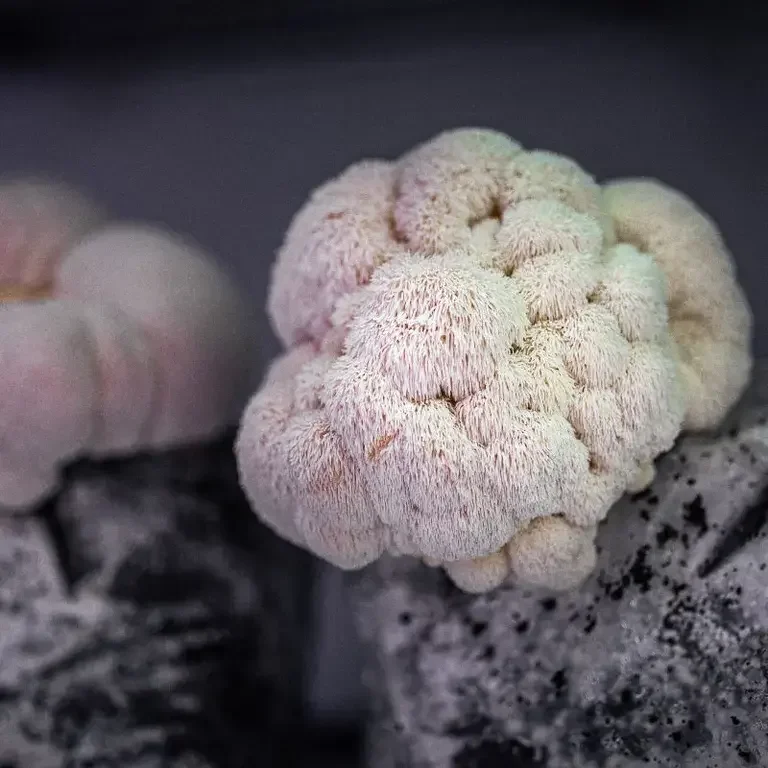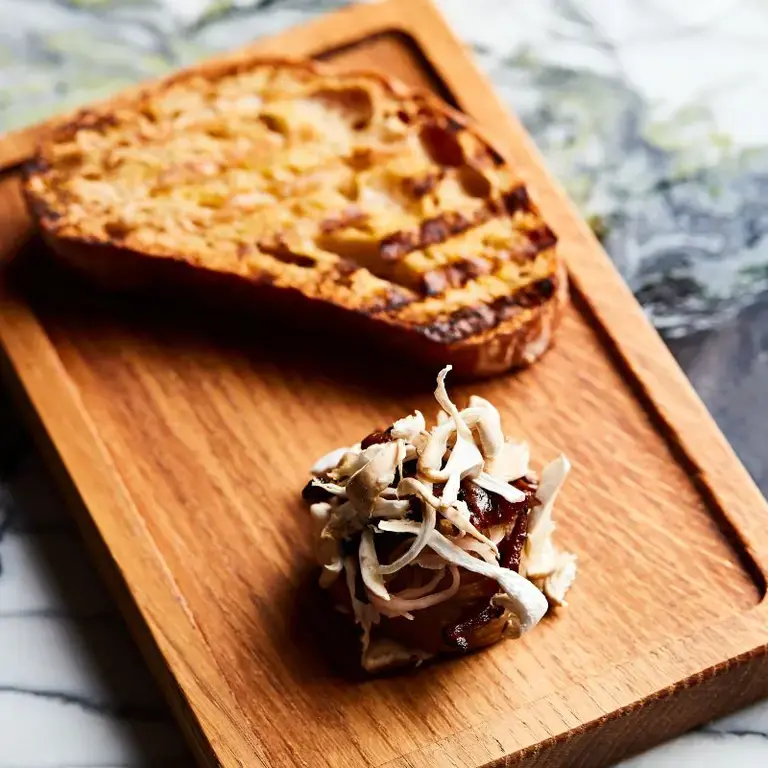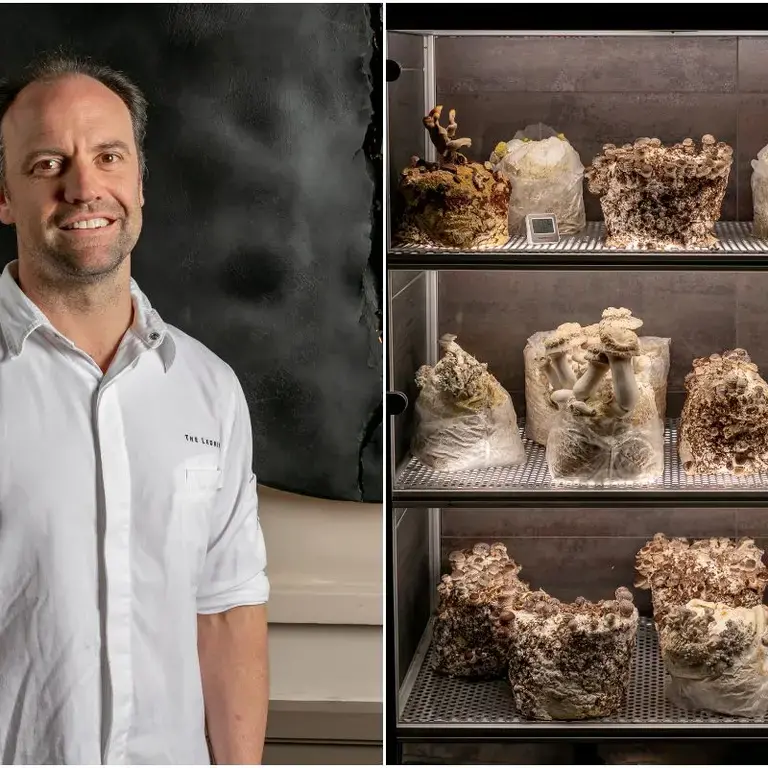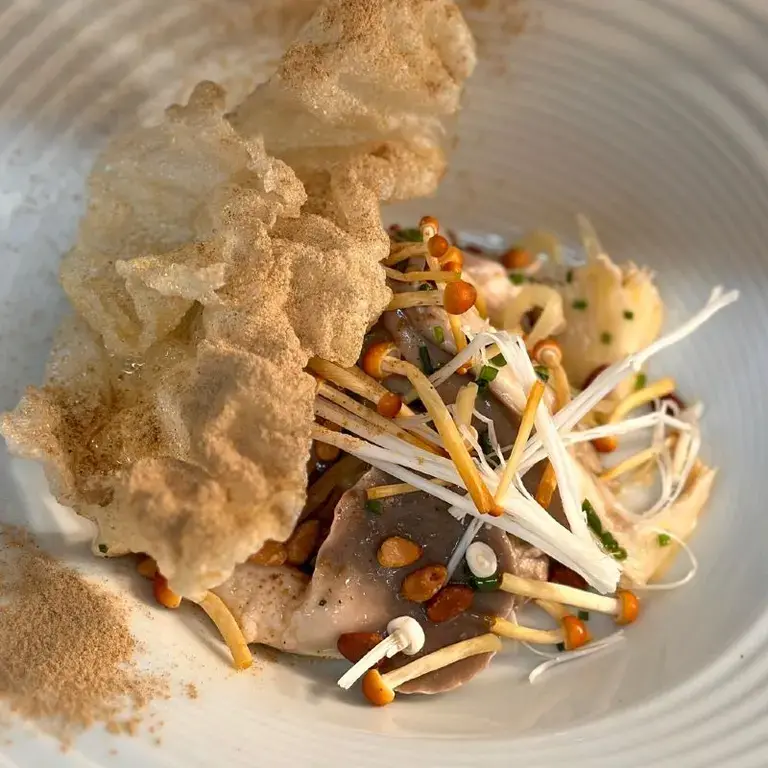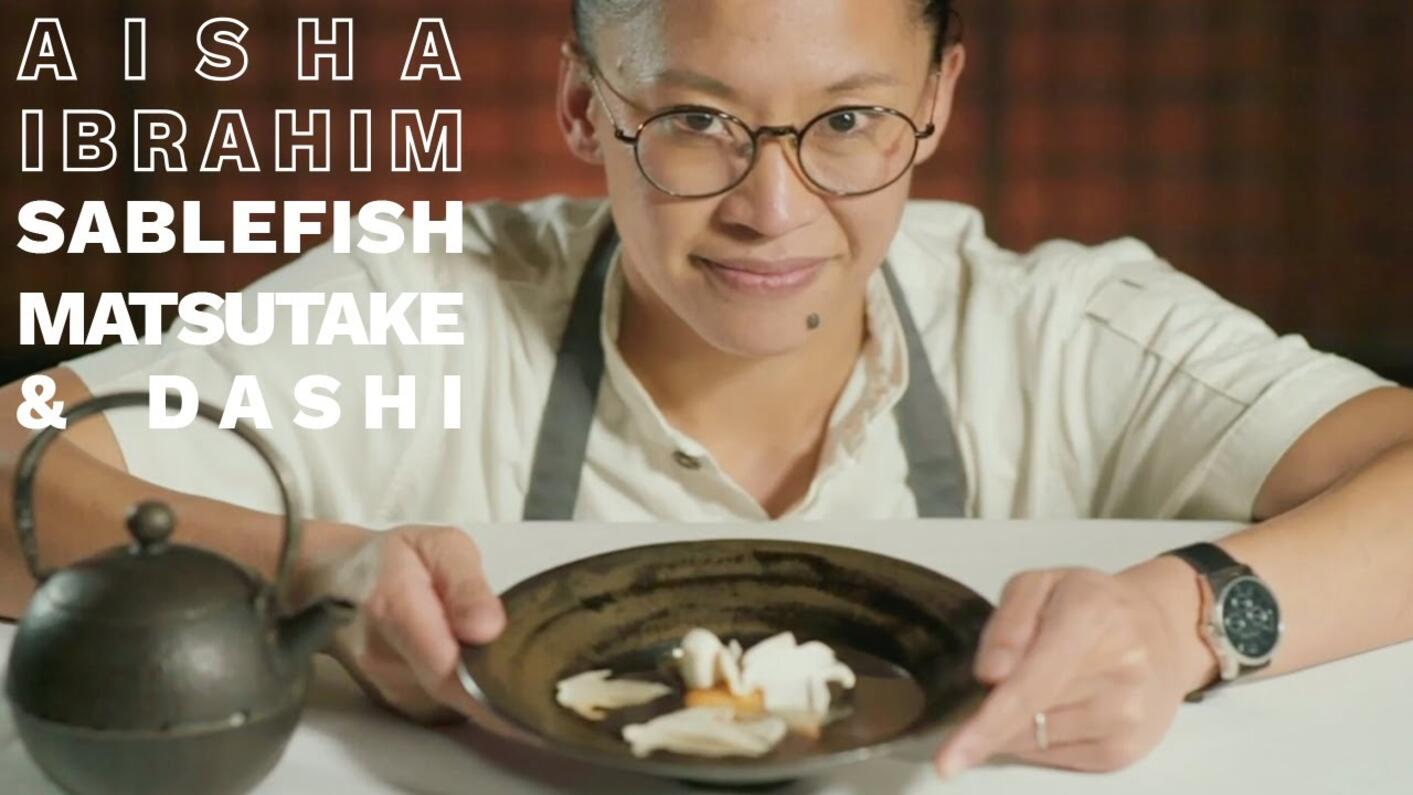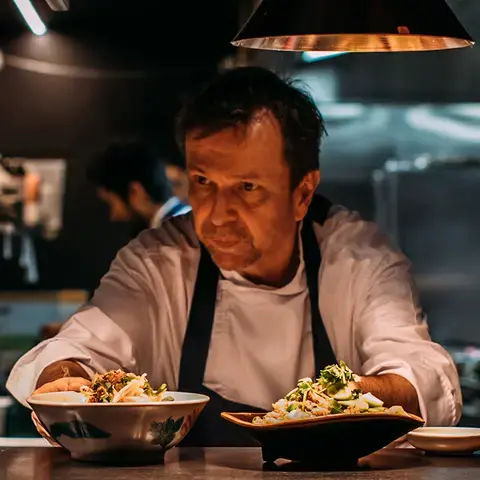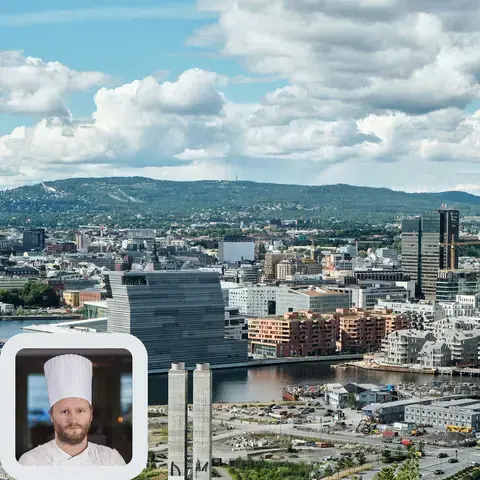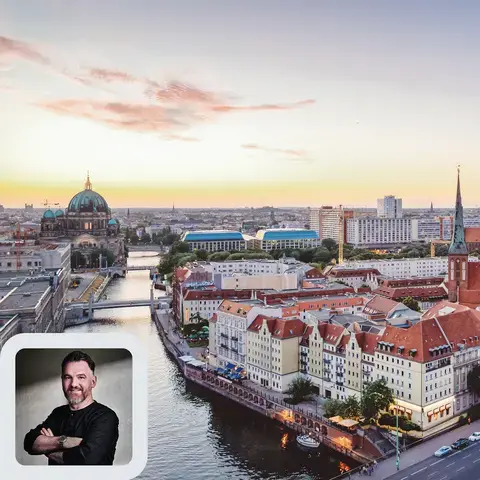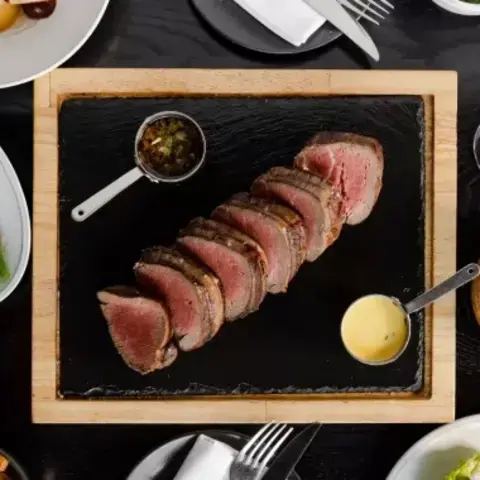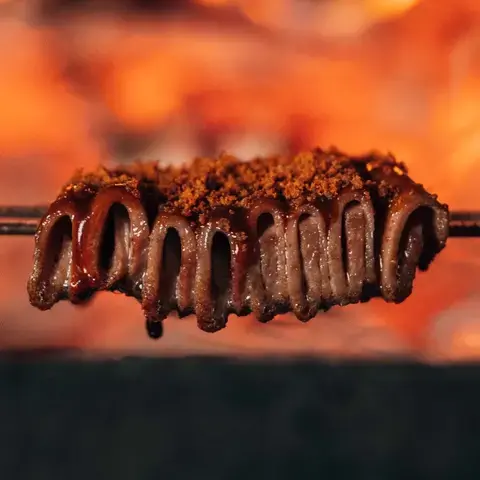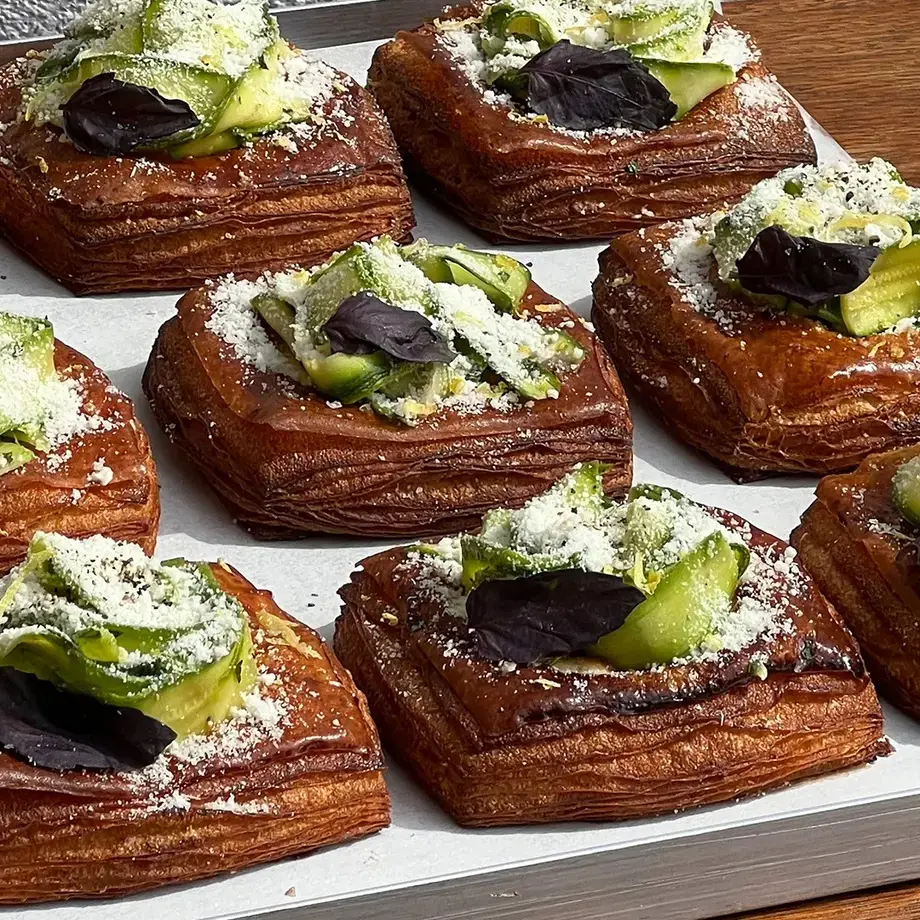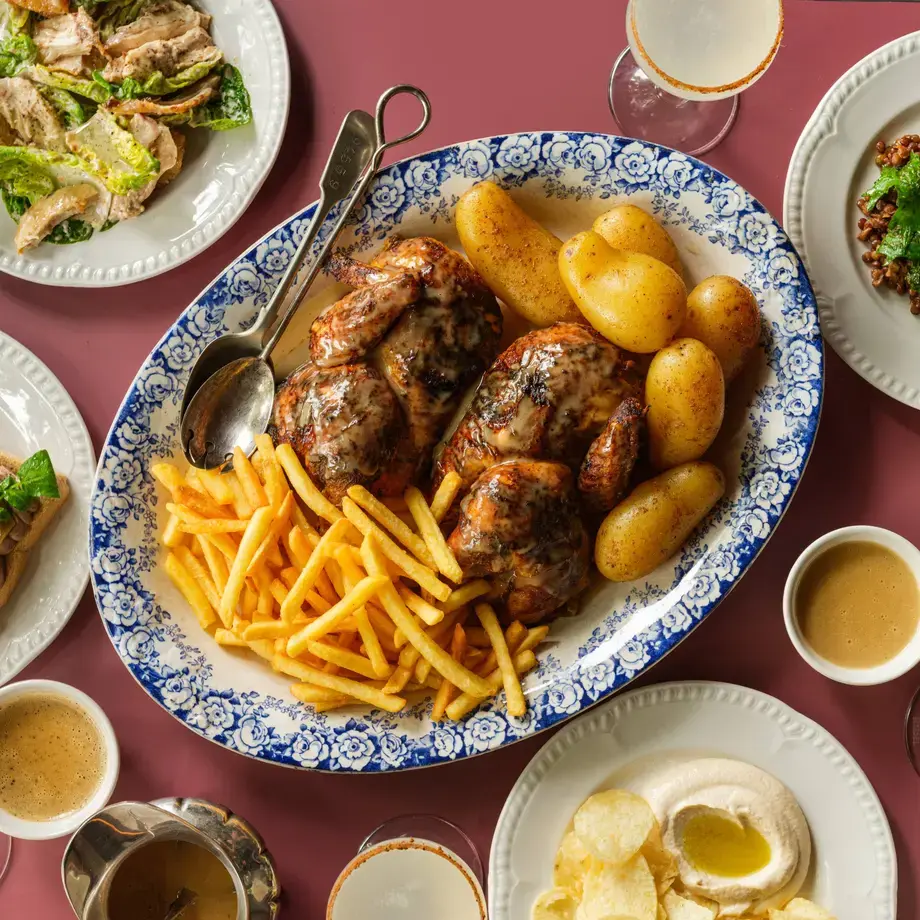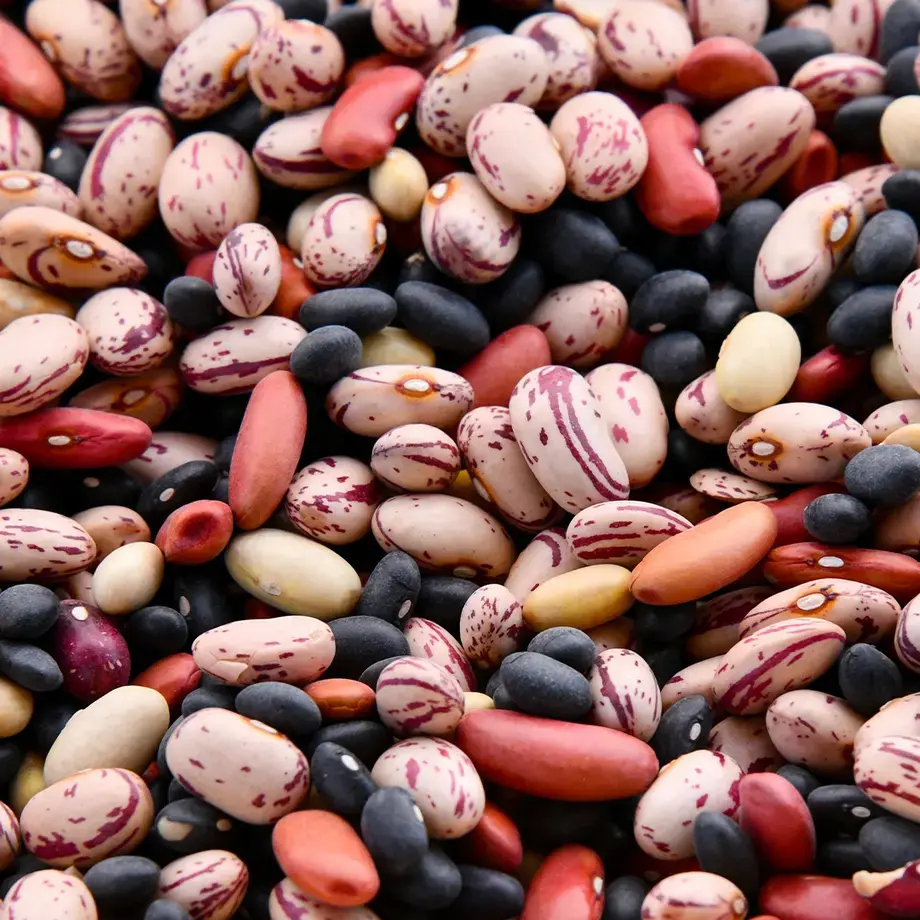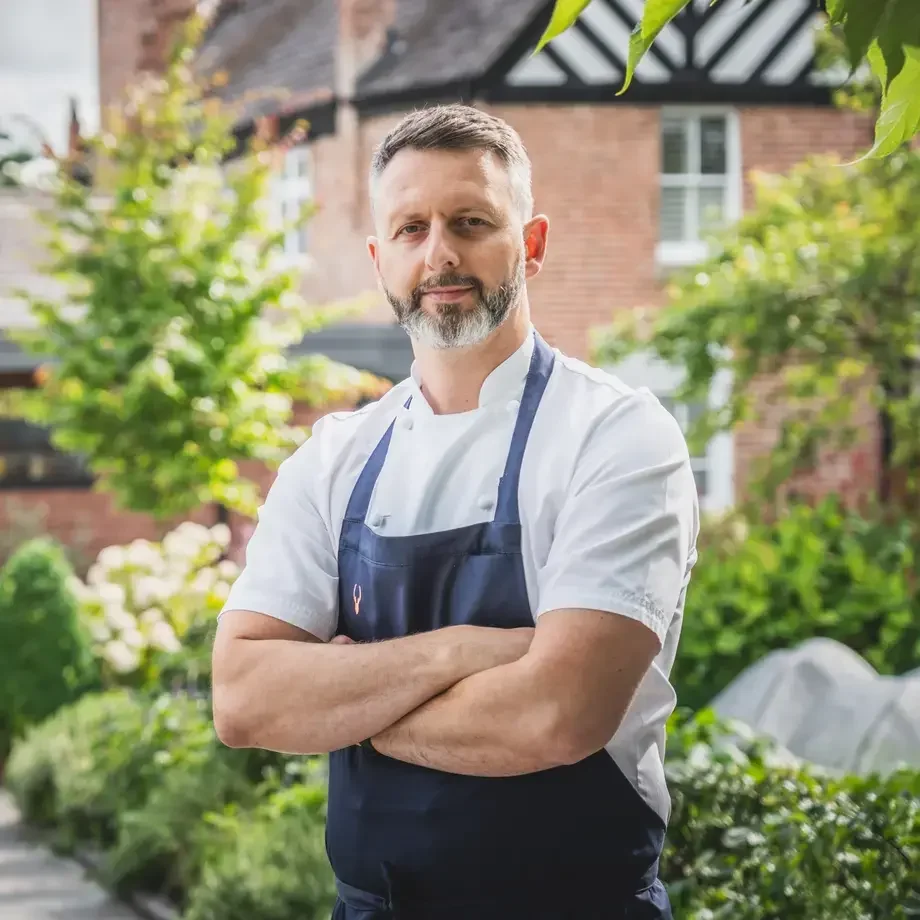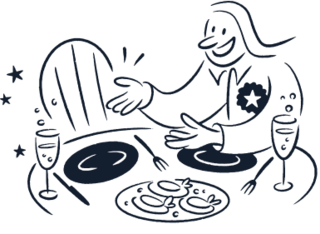There’s a hidden, humid yet well aired space above the kitchens of Fallow in London’s St James’s, Mayfair. It is kept strictly at 18°C with a constantly controlled humidity. Only a precious few people have seen inside. Head Chef Will Murray drops a metal loft ladder down in a tight space behind the dessert section and beckons me up to his “mushroom tree house”. There’s row upon row of grow bags full of a white substrate. Those of us who concentrated in biology lessons will know this is mycelium which is growing in used coffee grounds (no waste is key to Fallow’s conscious eating ethos). “These mushrooms are a week away from fruiting,” explains Murray, though we spot a couple of bags where a puffy white mushroom, the size of a cotton wool puff, with little craters, an on-trend lion’s mane mushroom, has already bolted the bag. He also grows hen-of-the-wood, golden enoki and shitake mushrooms.
Impressive though it is, this is a small, relatively low-tech set-up that supplies all the lion’s mane shavings on the roughly 200 servings ordered every day of Fallow’s signature mushroom parfait. The bestselling starter is made using the classic technique of a chicken liver parfait yet with mushroom seconds sourced from Fallow’s suppliers and mushrooms grown in-house. “It is, after all, the only thing we can grow in the centre of Mayfair,” jokes Murray wryly. The mushrooms are caramelised in butter until super dark and crisp, combined with shitake (mostly grown on-site), sauteed with mirin and soy then cooked in a water bath and left to set overnight in the fridge before being piped onto wooden boards for service. It is served with pickled shallots, herb oil-smeared sourdough and the raw lion’s mane simply pulled apart in strands which have a mineral-like, tingling taste and look rather like white truffle shavings. The intensely savoury parfait has such a velvety texture that Pierre Koffmann was initially convinced it was foie gras, apparently.
As Mike de Stroumillo of The Wild Room explains, the availability of foraged wild mushrooms is becoming more unpredictable as seasons change with global warming. Besides, digging up mushrooms releases gasses into the atmosphere. What’s more, many foragers work in Eastern Europe so there are the added climate costs of bringing mushrooms to the UK. De Stroumillo is trialling techniques to build on his extensive grow room underground in Bermondsey, London which already supplies restaurants including Philip Howard’s Elystan Street, Ikoyi and Huma. De Stroumillo stresses that this is a more environmentally friendly way of meeting demand for mushrooms, and produces a reliably higher quality mushroom. The ‘shrooms stay firmer during cooking so absorb less liquid and require less fat to be added in cooking. If space is simply too challenging in a kitchen to cultivate mushrooms, The Wild Room are on speed dial and ramping up production.
Brett Graham of London’s The Ledbury is among the fine-dining chefs leading the mycology march. Guests are shown the mushrooms cultivated in-house within a special cabinet supplied by Bristol Fungarium. They bring in growing blocks of compressed bran inoculate: predominantly with shitake, yellow and grey oyster, lion’s mane and nameko, a small chanterelle-like variety.
“Last week we had enough shitake to serve all our guests at The Ledbury all week,” explains Graham proudly. Diners at The Ledbury are invited to choose their own mushrooms as part of the set menu. The mushrooms are roasted and served with a ravioli filled with half potato puree and half grey oyster mushroom cream infused with buckwheat koji topped with a mushroom ketchup made from the shitake liquid, pepped with chive and pepper emulsions and finished with cep powder and a shaving of white truffle. “Both chefs and customers are fascinated by the weird shapes and the phenomenal growth rate of the mushrooms,” enthuses Graham.
